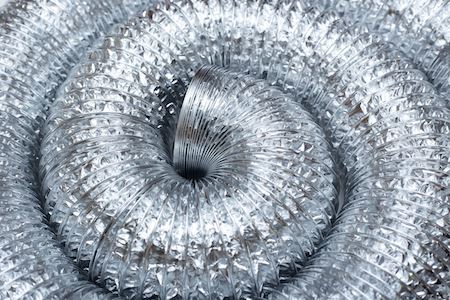What are ducts made of? In most cases, when you think of ductwork, you tend to think of metal ducts (also known as rigid or hard ducts) placed throughout your home. But metal ducts don’t always work for every situation.
That’s when flexible ducts are installed. Flexible ducts are used when metal ducts can’t reach certain locations. They bend easier. They squeeze into tight situations. They are easier to install in certain areas.

Like metal ducts, over time, they can accumulate a lot of things as airflow streams through. But because they are flexible, they are more challenging to clean. You can’t use the same tools you would on a metal system and expect it not to damage the material used to create flex ducts.
Duct cleaning should be performed once every 5 to 7 years. Other circumstances can increase need. Consider cleaning if you’ve had:
- Infestation
- New construction
- Extensive remodeling
- Chronic allergy or asthma symptoms
- Visible signs of biological growth
Flexible ductwork is often installed because it’s an easy material to work with. It can reach where more traditional metal ductwork can’t. If an installer was weaving ductwork around a staircase, for example, using flexible ducts would provide an easy way to tuck ventilation where other methods couldn’t reach. But that also puts them at more risk. When they’re in a storage area, the material can be bumped and torn (especially the insulation covering it). This decreases airflow, and makes the ductwork more at risk for collapse.
While most homes have metal ductwork, you can’t always be sure flexible ducts haven’t been used in certain parts of your home. Be sure to hire a contractor that can handle cleaning of both.
For all of these reasons and more, duct cleaning is best left to the professionals. Whether you have flexible ducts or standard metal ductwork, professionals understand the intricacies of ensuring it’s cleaned properly. to schedule a consultation.

